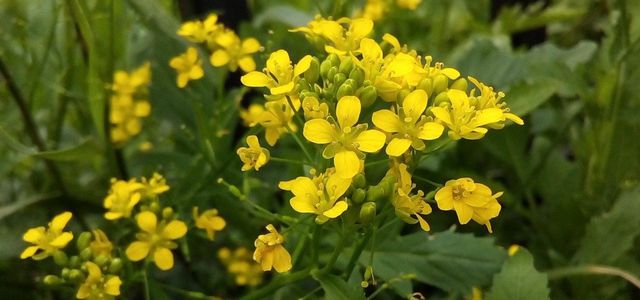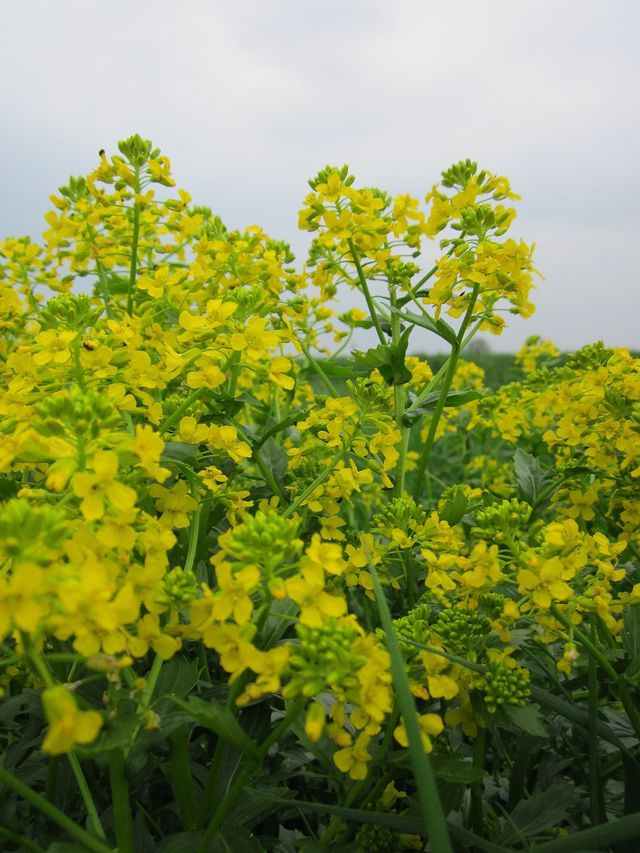
Barbara weed is a relatively unknown wild herb. Yet it offers not only colorful flowers in summer, but can also bring variety to your menu. Learn more about the characteristics and cultivation of the plant here.
Barbara weed, also known as winter cress, is a native plant. Since it is relatively undemanding and multiplies quickly, it is widespread in Europe along with other wild herbs such as dandelion or St. John’s wort. You can find it on roadsides, banks or on wild flowering meadows, among other places.
In total, there are about 22 different species of winter cress. Some of them are also common in parts of Asia, North America or North Africa, for example. Barbary cress also serves as a pointer plant. That is, where the wild herb grows, the soils are moist and nitrogenous and have a high clay content.
Contents
Barbara herb: advantages and uses
The golden yellow flowers of the barbara weed bloom from May to July. You can pick them for a wildflower bouquet or enjoy the colorful flowers in your garden. The small leaves of the plant can also be used in the kitchen. To do this, harvest them between October and May (when they are not in bloom). Be sure to harvest only the young shoots. These are the most aromatic.
The leaves taste spicy and pungent and are slightly reminiscent of black pepper. You can use them to quickly spice up salads or use the raw leaves as an ingredient for vegan dips, homemade herb curd or pestos. You can also lightly steam barbara herbs and then serve them, like spinach, as a side dish.
Winter cress seedlings and sprouts are also edible. They are reminiscent of conventional garden cress in taste and are also suitable as a topping for salads, dips and many other dishes. In naturopathy, barbara herb is considered a home remedy for colds and digestive and urinary tract problems. These effects have not yet been scientifically proven.
By the way, since barbara herb is one of the native wild herbs, it is also an important food source for bees, bumblebees and other insects. For more tips on how to make your garden more insect-friendly, click here: Insect-friendly garden: How to support biodiversity
How to grow barbara herb yourself

Barbara herb is a biennial plant. Since it is not very demanding in terms of care, you can easily grow it yourself:
Location:
When choosing a location, note that the plant can reach a height of up to one meter. There should also be a distance of about 20 centimeters between individual plants.
Barbara weed grows best in partial shade. You should avoid full sunny places.
The soil should be moist-loamy and reasonably nutrient-rich. Especially in the beginning, it is recommended to add some compost to the soil as fertilizer.
Sowing:
You can plant barbara herb in a bed, on the balcony or in a pot.
Sow the seeds in spring between March and May, or in autumn between September and early November. Be sure to press the seeds only lightly into the soil. If they are too deep in the ground, they will not get enough light and will not sprout.
Care and propagation:
- In the first year, the winter cress does not need fertilizer at all. From the second year on, you can add some compost to the soil from time to time – but do so sparingly. You can also use other organic fertilizers. Tips and advice on how to make your own organic fertilizer can be found here: Fertilizer for plants: Make your own all natural
- Barbary weed usually reproduces by itself. If this is not the case, you can carefully pinch off the seeds and replant them in the soil as described above.
- Winter cress is frost-hardy and does not require special care even in winter.

